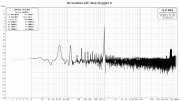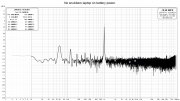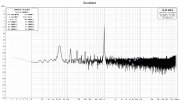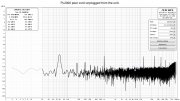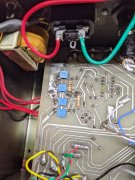Got the Quasimodos built and 3 transformers tested. Unfortunately all 3 are dual primary export, however they all test very similar, so that's good. All were tested with the recommended TDK film capacitors .01 uF and.15 uF, and a 1k ohm variable resistor used to arrive at the correct value. Resistor value didn't seem to be highly critical, with a give and take of approximately 20 ohms from the optimum damping. 120 ohms seems to optimum, but good damping was also seen at 100 and 140 ohms. I used 100 ohm because that's what had on hand.
View attachment 54355 View attachment 54357 View attachment 54358 View attachment 54356
The PL2000 transformer has two secondary outputs and a center tap. A .01 uF gets soldered between each secondary and center tap, and a .15 uF and 120 ohm carbon film in series also gets soldered between each secondary and center tap.
Can I hear any difference? No, not really. The preamp had no hum or noise before. The spectrum analyzer does show some improvement. After reading Mark Johnsons' paper (he designed the Quasimodo) published in https://linearaudio.net/sites/linearaudio.net/files/volumes/v10 mj abstract.png, I'm going to try some Vishay SBYV27-200 rectifier diodes.
View attachment 54359
The old PL2000 circuit board is starting to get really beat. That's OK, It'll remain a test unit.
View attachment 54355 View attachment 54357 View attachment 54358 View attachment 54356
The PL2000 transformer has two secondary outputs and a center tap. A .01 uF gets soldered between each secondary and center tap, and a .15 uF and 120 ohm carbon film in series also gets soldered between each secondary and center tap.
Can I hear any difference? No, not really. The preamp had no hum or noise before. The spectrum analyzer does show some improvement. After reading Mark Johnsons' paper (he designed the Quasimodo) published in https://linearaudio.net/sites/linearaudio.net/files/volumes/v10 mj abstract.png, I'm going to try some Vishay SBYV27-200 rectifier diodes.
View attachment 54359
The old PL2000 circuit board is starting to get really beat. That's OK, It'll remain a test unit.



